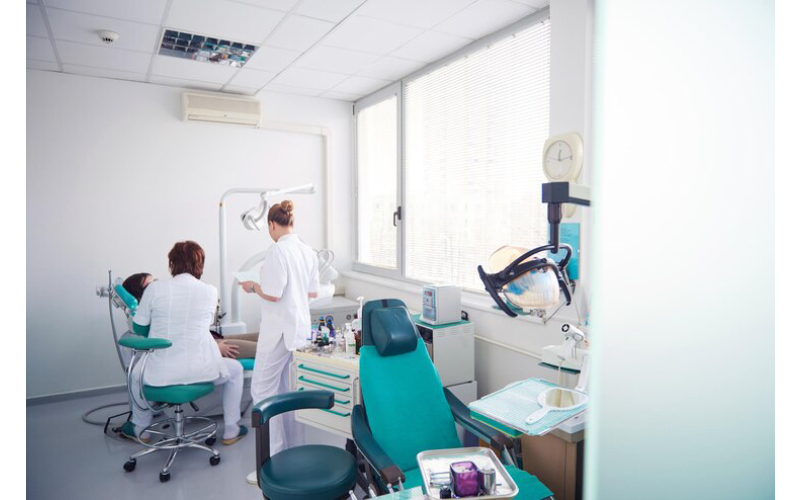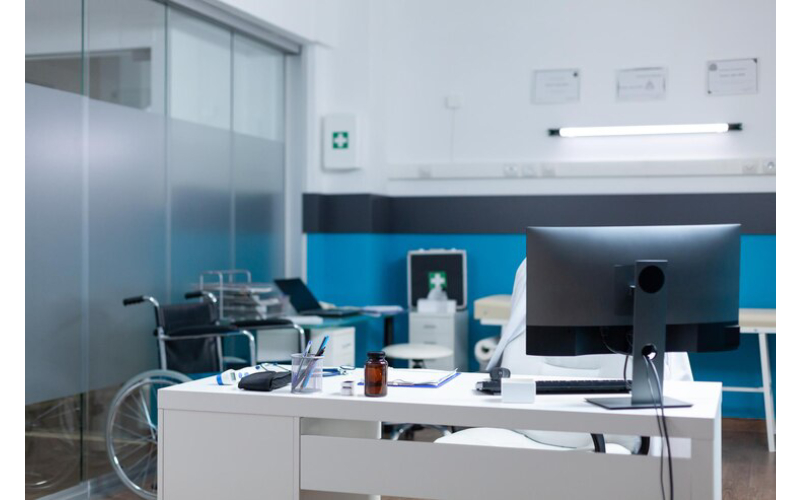Setting up optimal medical consulting rooms requires careful planning and consideration of various factors to ensure functionality, comfort, and efficiency. The layout of the room should facilitate smooth workflow and easy access to necessary equipment and supplies. Adequate space is crucial to accommodate medical professionals, patients, and their families, ensuring comfort and privacy during consultations. Proper lighting, both natural and artificial, plays a vital role in creating a conducive environment for medical examinations and procedures. The color scheme and decor should be soothing and calming to reduce patient anxiety and create a welcoming atmosphere.
Creating a Healing Environment in Medical Consulting Rooms
Creating a healing environment in medical consulting rooms is essential for promoting patient well-being and recovery. The design of the consulting room should prioritize elements that contribute to a calming and stress-free atmosphere. Natural light, through large windows or skylights, can enhance the mood and reduce anxiety. The use of nature-inspired elements, such as indoor plants or artwork depicting natural scenes, can also contribute to a soothing environment. Comfortable seating for patients and their families, along with thoughtful placement of furniture, can create a welcoming space. The choice of colors plays a significant role, with soft, neutral tones being more conducive to relaxation.

The Role of Technology in Modern Medical Consulting Rooms
Technology plays a crucial role in modern medical consulting rooms, transforming the way healthcare is delivered and enhancing the overall patient experience. Electronic health records (EHR) systems have revolutionized patient data management, allowing for seamless access to medical histories, test results, and treatment plans. Telemedicine capabilities enable remote consultations, expanding access to care for patients in remote or underserved areas. Advanced diagnostic tools, such as digital stethoscopes, otoscopes, and ultrasound devices, improve the accuracy and efficiency of medical examinations.
Ergonomic Solutions for Comfortable Medical Consulting Rooms
Ergonomic solutions are essential for creating comfortable and efficient medical consulting rooms. The design of the consulting room should prioritize the well-being of both patients and healthcare professionals. Ergonomic furniture, such as adjustable chairs and desks, can reduce the risk of musculoskeletal disorders and improve comfort during long consultations. Proper positioning of medical equipment and supplies within easy reach can minimize repetitive strain and enhance workflow efficiency. Adjustable lighting can reduce eye strain and improve visibility during examinations. Incorporating sit-stand workstations allows healthcare professionals to alternate between sitting and standing, promoting better posture and reducing fatigue. Ergonomic keyboards and computer monitors positioned at eye level can prevent neck and back strain.
Innovative Design Trends for Future-Ready Medical Consulting Rooms
Innovative design trends are shaping the future of medical consulting rooms, focusing on creating spaces that are not only functional but also adaptable and patient-centered. One emerging trend is the use of modular design, allowing consulting rooms to be easily reconfigured to meet changing needs. This flexibility is particularly important in adapting to new medical technologies and evolving patient care models. Biophilic design, which incorporates natural elements and connections to the outdoors, is gaining popularity for its positive impact on patient well-being. Sustainable design practices, such as using eco-friendly materials and energy-efficient systems, are also becoming more prevalent. Integrating telemedicine infrastructure into consulting rooms is essential for providing remote care options.
Essential Equipment for Fully Functional Medical Consulting Rooms
Having the essential equipment is crucial for ensuring that medical consulting rooms are fully functional and capable of delivering high-quality care. Basic equipment includes examination tables, medical lighting, and diagnostic tools such as stethoscopes, blood pressure monitors, and otoscopes. Advanced diagnostic equipment, such as digital imaging systems and ultrasound machines, may also be necessary depending on the specialty. Computer systems with EHR software are essential for managing patient records and facilitating efficient workflow. Telemedicine equipment, such as high-resolution cameras and secure communication platforms, is increasingly important for remote consultations. Additional equipment, such as medical scales, thermometers, and spirometers, may be required for specific assessments.
Designing Medical Consulting Rooms for Specialized Care
Designing medical consulting rooms for specialized care requires careful consideration of the unique needs of different medical specialties. Each specialty may have specific requirements for equipment, layout, and patient interaction. For example, a cardiology consulting room may need specialized diagnostic tools, such as ECG machines and stress test equipment, while a dermatology room may require high-quality lighting and magnification tools. Pediatric consulting rooms should be designed with child-friendly decor and furniture to create a welcoming environment for young patients. Gynecology consulting rooms may need examination tables with stirrups and privacy screens. Additionally, designing for specialized care involves ensuring that the room is adaptable to accommodate various procedures and examinations. The layout should facilitate efficient workflow and easy access to necessary equipment.
Enhance Patient Care with Professionally Designed Medical Consulting Rooms
Professionally designed medical consulting rooms can significantly enhance patient care by creating an environment that supports effective communication, comfort, and efficiency. A well-designed consulting room considers the needs of both patients and healthcare professionals, ensuring that the space is functional and welcoming. Thoughtful layout and design elements, such as comfortable seating, soothing color schemes, and adequate lighting, can reduce patient anxiety and create a positive experience. Incorporating technology, such as EHR systems and telemedicine capabilities, can streamline workflows and improve the quality of care. Ergonomic solutions, such as adjustable furniture and proper positioning of equipment, can enhance comfort and reduce the risk of strain for healthcare professionals.
Conclusion
The design and setup of medical consulting rooms play a crucial role in the delivery of effective healthcare. Optimal medical consulting rooms consider various factors, including functionality, comfort, technology, and aesthetics, to create environments that support healing and effective communication. Key considerations for setting up these rooms include proper layout, lighting, color schemes, and accessibility. Creating a healing environment involves incorporating natural light, soothing colors, and personalized elements. Technology, such as EHR systems and telemedicine capabilities, enhances the functionality and efficiency of consulting rooms. Ergonomic solutions ensure comfort and reduce the risk of strain for both patients and healthcare professionals. Innovative design trends, such as modular and biophilic design, are shaping the future of medical consulting rooms.



